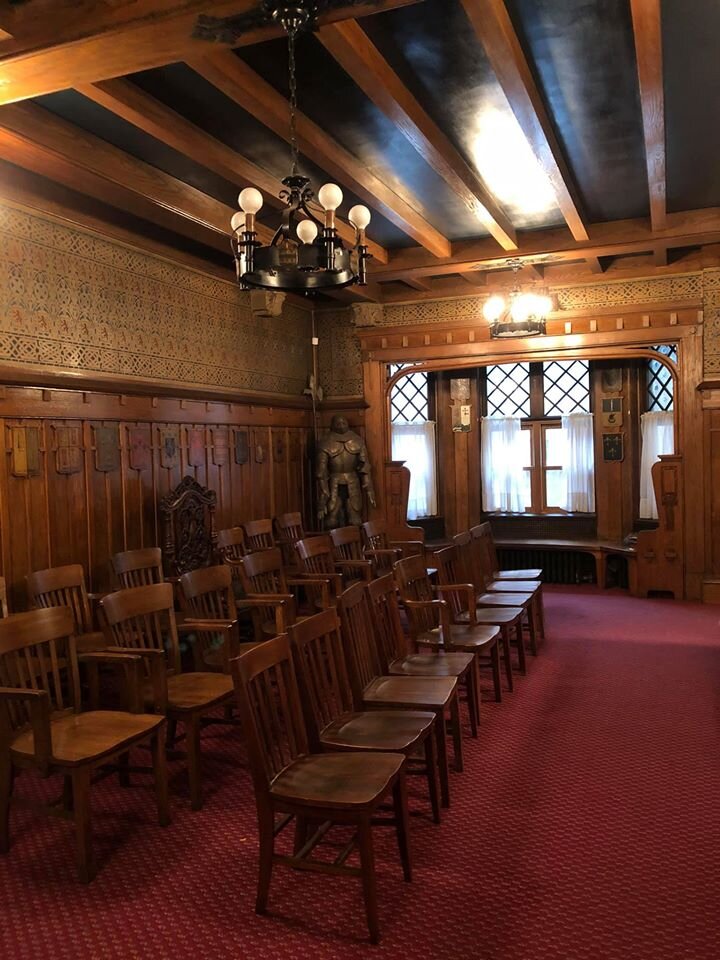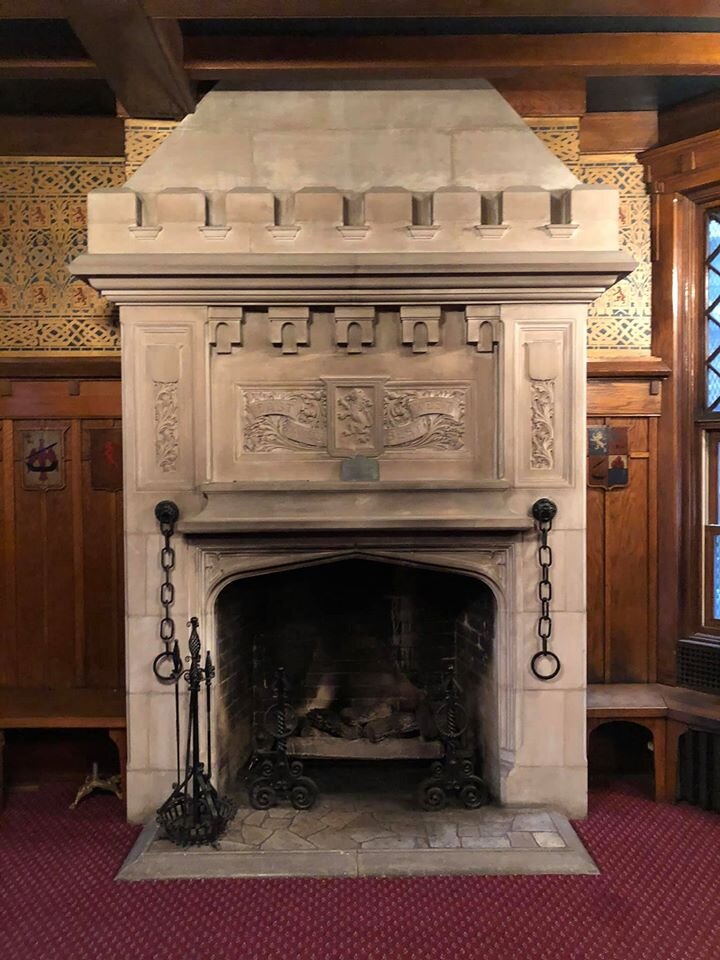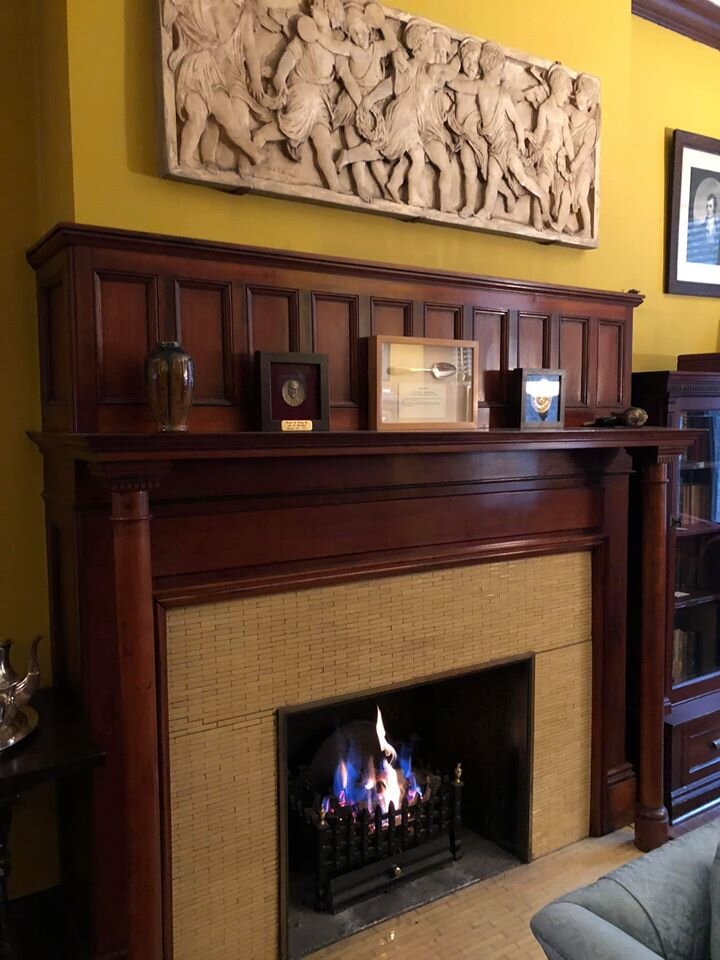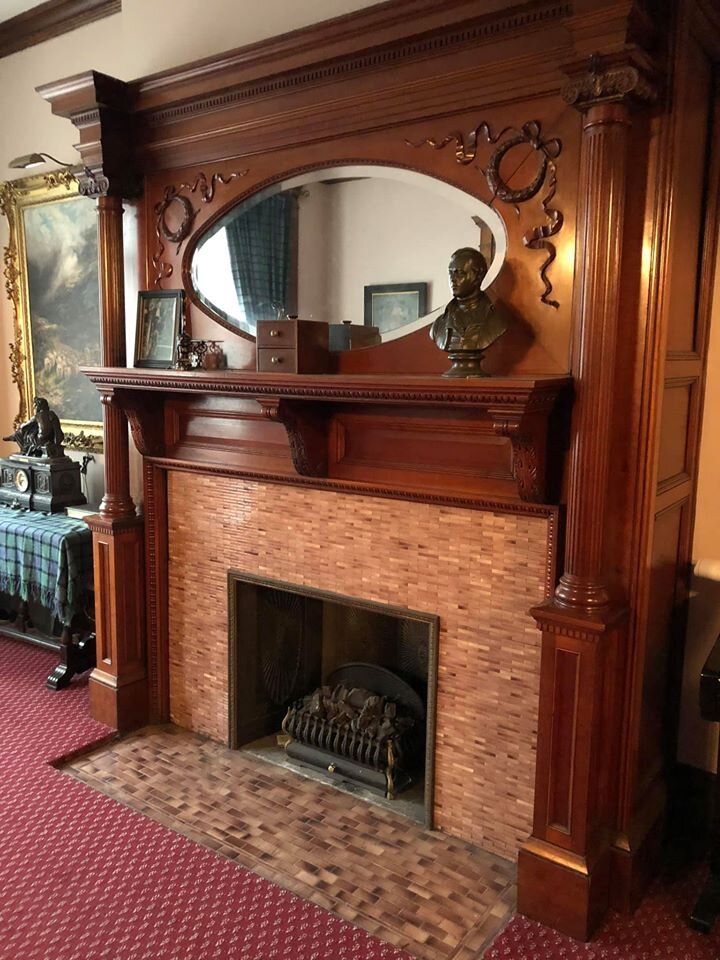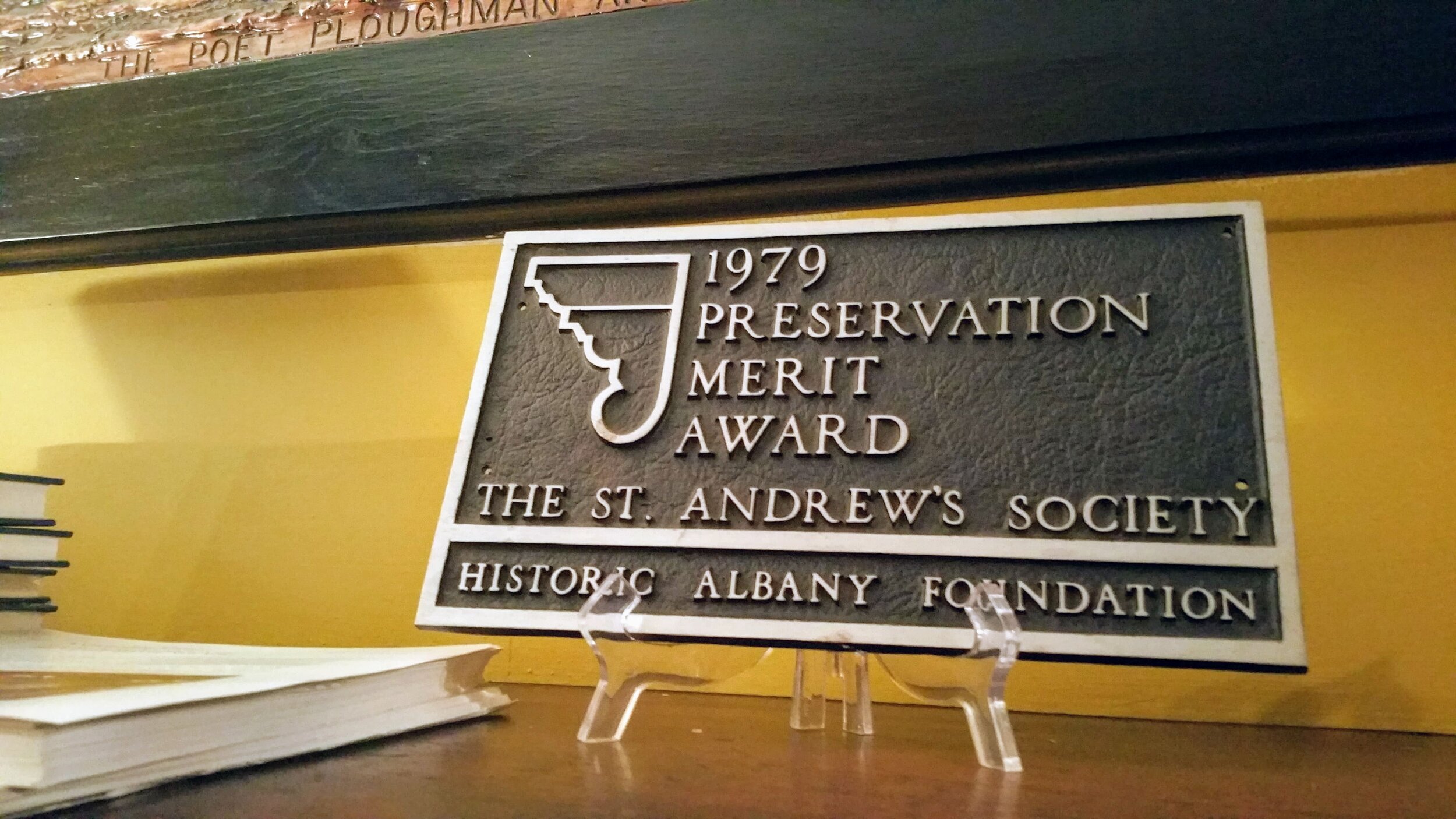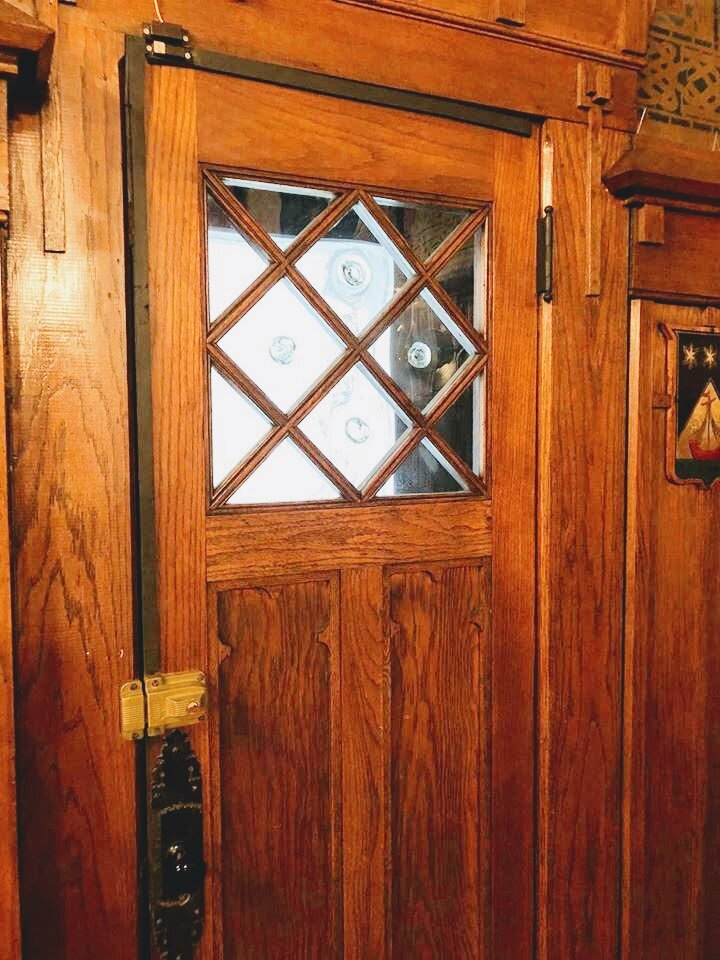The Dutch in New Netherland: The Beginnings of Albany, New York
/By Andrea Lurie
The Dutch People in Europe: A Background to Dutch Colonialism
Compared to other Western European nations, the Netherlands became involved in colonialism much later. During the 16th century, the Spanish and Portuguese empires began their colonial exploits off the coast of Western Africa, in Central and South America, and the Caribbean. As England developed as a more imposing world power by the beginning of the 17th century, they too contributed to the colonization of the “New World.” A major contributing factor as to why the Dutch and the government of the Netherlands did not participate in colonialism was due to political instability.
Until 1572, the Dutch were subjects to the Habsburg dynasty. Under Habsburg rule, Dutch merchants were forbidden from sending ships to colonies overseas.[1] For centuries, the Habsburgs were one of the most powerful royal families in Europe. Their “ancestral” land where their dynasty originated from is present-day Austria and Hungary, amongst other nations. Connections with other nations were formed through marriage, war and diplomacy.[2] Dutch merchants were prevented from interacting with colonial economies because they were perceived as a threat to Habsburg financial investments. Beginning in 1566, a revolt broke out against the Habsburg king of Spain, Phillip II. The revolt ended with the Netherlands becoming a divided nation: The Northern provinces separated from the South, and the Southern provinces remained under Habsburg control until 1714. Religion played a significant role in the revolt. The Northern Provinces adopted Calvinism and Protestant faith, while the Southern Provinces remained Catholic.
Within the Netherlands, a “Dutch identity” was in the early stages of development. The provinces that became independent following the Dutch Revolt were composed of people that came from a variety of European backgrounds, religious practices, and political affiliations. As Cantwell and Wall describe:
“Although the Europeans in New Netherland were regarded as Dutch, they were a mixed group… The concept of "Dutchness” was a work in progress. The seven provinces that made up the Netherlands had united only relatively recently and people there still tended to identify with their province and not with their new, fragile nation-state. The citizens of the United Provinces tended to speak different languages, practice different religions, follow different laws and customs, and even had different systems of coinage and weights and measurements.”[3]
Despite these cultural differences between the Dutch colonists that came to New Netherland, a distinguished culture emerged in New Netherland that has left a legacy in the region still seen today.
“A major contributing factor as to why the Dutch and the government of the Netherlands did not participate in colonialism was due to political instability…”
The Dutch East and West India Companies
Following the Dutch Revolt, merchants began to interact with colonies in the East and the West. Highly valuable spices from the East were a coveted source of profit for Dutch traders, but the Dutch colonists had very a difficult time establishing settlements in Asia. Competition with Indigenous people and other European nations led them to focus on the Atlantic and North American regions. Expeditions funded by Dutch merchants and government officials were sent across the Atlantic in attempts to find a sea route to Asia. After it became apparent a sea route to Asia did not exist in North America, the Dutch colonists decided to develop a trading post in present-day New York and New England, to take advantage of the profitable fur trade in the region. Because of the different circumstances encountered by the Trade Companies, the two different organizations developed relatively different characteristics: The Verenigde Oost-Indische Compagnie [East India Company[4] or VOC] focused on territorial expansion, while the Geoctroyeerde West-Indische Compagnie [West India Company or WIC[5]] was used for both political purposes and as a settler colony.”[6]
The Dutch still faced a great deal of difficulty and resistance in establishing a colonial presence in the Atlantic. Within New Netherland, present-day New York, New Jersey, Delaware and Connecticut, the colonists experienced a variety of conflicts with the Indigenous Native Americans in the region: the Iroquois, Mahican and Lenape peoples were some of the Native communities that were disturbed by European colonialism. The Dutch in New Netherland were also competing with the English and French colonies in the region.
The journey across the Atlantic from the Netherlands to the New World was a serious undertaking. By the mid-17th century, The Dutch government and West India Company began to promote immigration to the colonies. The voyage across the Atlantic was expensive for a majority of people, so in some instances, a fixed fare for the trip was established. During the trip (which would take weeks to months) those who could not afford private cabins were constrained to cramped spaces with unsanitary conditions. Instead of sailing directly from the Netherlands to New Netherland, the captains would take a route through the Caribbean.[7]
“Although the Europeans in New Netherland were regarded as Dutch, they were a mixed group… The concept of "Dutchness” was a work in progress...”
Colonizing New Netherland
The Dutch explored the land around Albany, NY in the beginning of the 17th Century. The Dutch East India Company sponsored Henry Hudson in 1609 to discover a route to China that bypassed the Middle Eastern land route as well as the trip around the African continent. Henry Hudson (c. 1565 - c. 1611) Hudson sailed for the English as well as the Dutch during the 17th Century. When Hudson sailed up the river now named after him, he traveled through the present-day Albany area. The Dutch East India Company Sent Hudson out to cross the Atlantic in his ship The Halfmoon on April 6th, 1609. Hudson travelled 150 miles inland, reaching the vicinity of Albany, NY until it was decided that the river did not access the Pacific Ocean.
After the return of Henry Hudson, Dutch merchants created the New Netherland Company with the aim of profiting from fur trading with the Indigenous People in what is now New York State. New Netherland was established as a Dutch colony in 1614, After the establishment of the Dutch West India Company in 1621 the New Netherland Company was dissolved. New Netherland was a unique Dutch colony because although it was intended to be a trading post, it eventually developed into a settlement colony.[8] Dutch and other Europeans were attracted to living in New Netherland for numerous reasons; various contemporary accounts from the 17th century described it as temperate and fertile with bountiful natural resources. Walnut and Oak trees were plentiful and were used to construct houses in the region.[9]
With the arrival of Dutch and other European colonists, the landscape of New Netherland changed dramatically. Jaap (author of “The Colony of New Netherland: A Dutch Settlement in Seventeenth-Century America.”) details the changes brought about by European farming methods introduced by the Dutch in the region:
“The sedentary farming carried out by the colonists differed from the way the Indians used the land, with the result that the appearance of New Netherland changed considerably under Dutch management… Farming in New Netherland was less arduous and difficult than back in Holland, principally because there was no need to dig drainage ditches…. The land was regularly left fallow or planted with peas, but in many instances, the soil was so rich that this was not necessary… The grains most cultivated by the colonists were wheat and rye. Barley and buckwheat were less common, as the finches and other birds were fond of these.”[10]
The Dutch also incorporated Native methods of farming: “the [Native Americans] sowed at intervals of approximately six feet, alternated with pumpkins or beans. The Dutch adopted this Indian custom. Maize was frequently used as the first crop in newly cultivated soil.”[11]
The New Netherland Company built the first Dutch building in what is now New York State’s capital, the city of Albany: Fort Nassau. In 1617, the fort was destroyed by flooding caused by the Spring thaw. The Dutch West India Company constructed Fort Orange in 1624. Fort Orange, the first permanent Dutch settlement in New Netherlands, was named after the Dutch Orange-Nassau family, a powerful family from the Netherlands. Today, the Orange-Nassau House is the current royal family of the Netherlands.
A dispute between the Director-General of the New Netherland Colony and the Patroon of Rensselaerswyck led to the development of the municipality of Albany. Kiliaen Van Rensselaer, the first Patroon of Rensselaerswyck in 1629, controlled 24 miles of shoreline along the Hudson River along with 24 miles of land on each side of the fort. Because of this, Kiliaen Van Rensselaer and the Rensselaerswyck Patroon’s lawyers believed that Fort Orange fell under their control. By 1648, the Director of the New Netherland Colony viewed the Patroon as a threat to the fur-trading profits of the region. Consequently, Peter Stuyvesant (a Dutch director-general of the colony of New Netherland) established the Court of Justice for the Village of Beverwyck in 1652 to settle a land dispute, creating the first municipal government for the future city of Albany.
“New Netherland was a unique Dutch colony because although it was intended to be a trading post, it eventually developed into a settlement colony…”
The Population of the Dutch Colony
New Netherland started out as a trading colony, but it evolved into a permanent settlement of the course of the 17th century. In the early years of New Netherland, Fort Nassau and Fort Orange sustained a population of a couple of hundred. By the end of Dutch control of the colony, the population had grown to about eight thousand residents.[12]
In 1664 the colony came under English control. New Amsterdam (later renamed New York by the English) had a population of roughly two-thousand five hundred. Beverwijck - the Dutch name for Albany and the settlement around Fort Orange - had about one thousand residents.[13]. In the later years of Dutch colonial rule, a variety of people were making the move across the Atlantic; often because they had a family member already established in the region. Some were contract laborers or indentured servants, who sold themselves into contracts to pay for their voyage expenses. West India Company employees of various ranks and statuses were present throughout the colony as well. Sailors, merchants, religious officials, military professionals and farmers made up a bulk of the community.[14] Enslaved people from Africa and South America resided in New Netherland alongside the European and Native communities. Cultural diversity is present in both the Dutch homeland and the colony of New Netherlands. Native people, people of African and South American descent and Dutch Europeans all contributed to the colonial culture developed in New Netherland.[15]
Map of New Netherland
The Dutch Relationship with the Native People
The relationship between the Native people and the Dutch and other colonists residing in New Netherland is one that was fraught with violence and misunderstanding. There were two main groups of Native people that had ancestral lands around present-day Albany: the Mohawks and Mahicans. The Mohawks, referred to as the “Maquas” or Mahakobaasen,” by the Dutch, traditionally lived westward of Fort Orange.[16] The rest of the Iroquois nation, a French word for the Haudenosaunee people, were called the ‘Sinnekens’ by the Dutch.
In official Dutch records of the New Netherland colony, many accounts of the Native People demonstrate European racist and prejudicial views.[17] Contemporary accounts of the population of Native people around Fort Orange are extremely difficult to corroborate, due to the lack of accurate and extensive information. One such account Adriaen Van Der Donck made in 1655 estimates the population of Native people declined by at least ten percent following European contact.[18] The cultural and religious differences between the Dutch and the Native Americans were a source of tension. The division of labor based on gender amongst Native people was different from the way the Dutch separated work duties. Native women would carry out all of the farming duties, whereas in Dutch culture, men would perform all of the farming work. The men in Native communities would be away hunting and fishing for months at a time; the Dutch perceived this as the men being “lazy,” since the women performed work European men would complete.[19]
Another source of cultural misunderstanding was the status of the Native leaders, Sachems. Sachems were male leaders appointed by female elders within Native communities: The Dutch did not recognize the matrilineal social structure of Native people as equal to their patriarchal communities. Sachems were expected to provide for their communities and would live in states that Dutch leaders viewed as impoverished. Compared to European society, where leaders were wealthy and members of a small percent of the population that held concentrated wealth, the Sachems were not seen as powerful or influential. However, the Dutch began to incorporate the ritual of exchanging gifts as a sign of respect and understanding during trade deals with Native people.[20]
During diplomatic meetings, the language barrier was another source of tension. The language difference also perpetuated discriminatory attitudes towards Native people. At Fort Orange. Despite the Mohawks being their primary trading partner, few colonial officials were fluent in the Iroquois language. Johannes Megapolensis (1603-1670) was a Dutch Reformed minister who served at Fort Orange after 1642, and is credited with being one of the first Protestant missionaries to the Native people in the North American colonies. Jaaps details the difficulties Megapolensis had with learning the Iroquois language:
“Neither did the Dutch at Fort Orange understand much of the Indian language. Johannes Megapolensis tried to learn the language of the Mohawks, but experienced several problems. In attempting to compile a vocabulary, he failed to make them understand his goal. Also, the variety of tenses, declinations, and conjugations confused him, as it did not conform to his knowledge of Latin and Greek. Colonists who had been living in New Netherland for a longer period could not give him much assistance.[21]”
Next Month, our post will feature more information about Dutch architecture. The history of the legacy of Dutch culture in Albany will be explored as well! For more information about the Dutch and the Native Americans in New Netherland, check out our blog post “The Mohawks and Mahicans in New Netherland: A Look at their History and Architecture.”
“ Some were contract laborers or indentured servants, who sold themselves into contracts to pay for their voyage expenses…”
End Notes, References and Further Reading
[1] Jacobs, Jaap. 2005. New Netherland: A Dutch Colony in Seventeenth-Century America. The Atlantic World. Leiden: Brill. http://search.ebscohost.com.libproxy.albany.edu/login.aspx?direct=true&db=e000xna&AN=173946&site=ehost-live. Pg. 1.
[2] Brownlow, Mark. “The Habsburg Monarchy.” Visiting Vienna, Pg. 2 https://www.visitingvienna.com/culture/habsburg-monarchy-introduction/
[3] Cantwell, Anne-Marie, and Diana DiZerega Wall. "Landscapes and Other Objects: Creating Dutch New Netherland." New York History 89, no. 4 (2008): 315-45. Pg. 316. http://www.jstor.org/stable/23185846.
[4] Rijksmuseum. 1602 Trade with the East: VOC. Pg. 1. https://www.rijksmuseum.nl/en/rijksstudio/timeline-dutch-history/1602-trade-with-the-east-voc
[5] For more information on the WIC: https://www.rijksmuseum.nl/en/rijksstudio/2293521--Tomasz-Jankowski/collections/dutch-west-india-company?ii=0&p=0
[6] Jacobs, Jaap. Pg. 2. [7] Jacobs, Jaap. Pg. 45-46. [8] Jacobs, Jaap. Pg. 3. [9] Jacobs, Jaap. Pg. 16. [10] Jacobs, Jaap. Pg. 17. [11] Jacobs, Jaap. Pg. 17. [12] Jaaps, Jacob. 47-48. [13] Jaaps, Jacob. 48. [14] Jaaps, Jacob. 51. [15] Cantwell & Wall. Pg. 318. [16] Jacobs, Jaap. Pg. 22. [17] Jacobs, Jaap. Pg. 22. [18] Jacobs, Jaap. Pg. 24. [19] Jacobs, Jaap. Pgs. 25-26. [20] Jacobs, Jaap. Pgs. 27-28. [21] Jacobs, Jaap. Pg. 28.




























